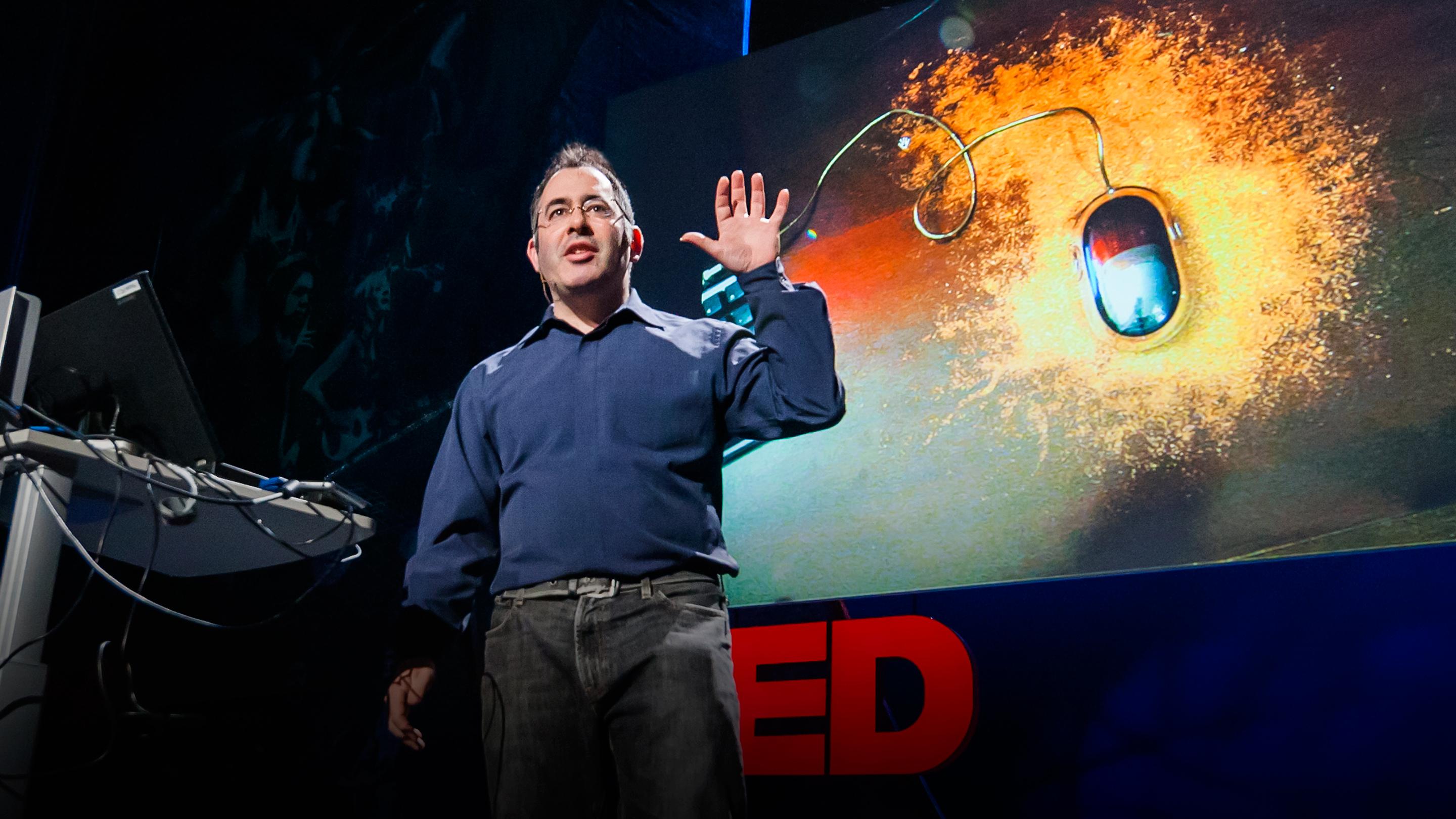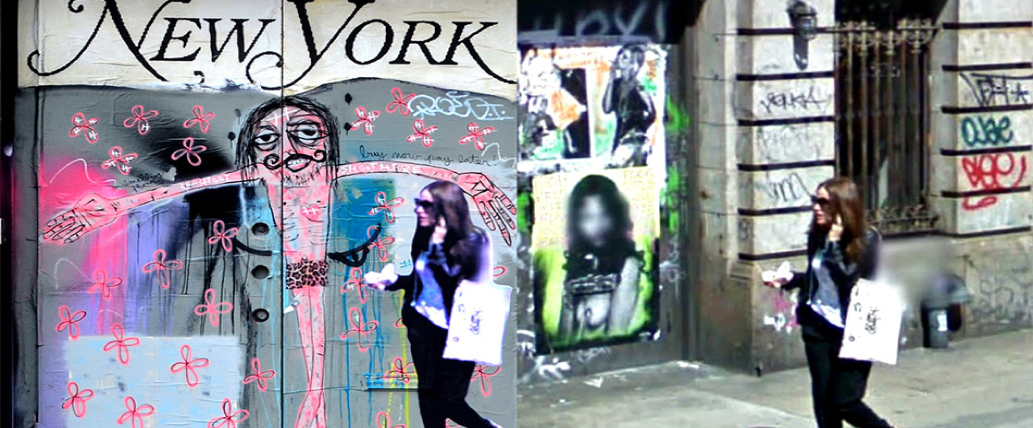When talking about projects such as Renewable Rhythms, we cannot avoid addressing the broader issues raised by matters such as by data acquisition and processing, managing Artificial Intelligence prompts, or even just the user experience.
Renewable Rhythms is not only a meeting of technical skills but also an opportunity for debate that goes far beyond mere IT and encompasses ethical and aesthetic issues.
Golan Levin, an artist who uses data to construct works of art, spoke of “material data” in a 2009 TED talk: a set of numbers, texts and sounds combined together and polished as if they were marble, can give rise to new constructs. New artefacts that are then combined with others to generate new ones, again and again. He cites the example of his work Remark in which a participant in the exhibition speaks into a microphone; a computer records them and constructs a video with geometric shapes projected on the screen. Levin argues that this work raises questions about the ethics of using and manipulating data.

Another essay by Luke Stark and Kate Crawford published on ResearchGate under the title “The Work of Art in the Age of Artificial Intelligence: What Artists Can Teach Us About the Ethics of Data Practice”, has several digital artists giving their views on the ethical challenges of working with data and AI.
A fundamental point emerges: the need to safeguard privacy data. The work of artists such as Luke DuBois and Paolo Cirio highlights ethical ambiguities surrounding the use of personal data. DuBois, for instance, has used data collected from dating sites to create artwork, raising questions about consent and privacy. Cirio, an artist and hacker, has explored the dynamics of privacy and advertising through his “Street Ghosts” project, using images from Google Maps without the consent of the people depicted.

The debate on privacy and data manipulation in research also examines the difference between ethics and morality: Cirio’s argument crucially advocates a clear distinction between artistic ethics and conventional morality. While morality often refers to a set of shared or socially accepted values, Cirio believes that ethics should be more flexible and adaptable, allowing artists to explore and provoke without compromising the rights and respect of the individuals involved. This approach allows artists to navigate the complex dynamics of data and surveillance in a responsible manner, while maintaining the creative and critical freedom necessary to produce meaningful and impactful works.
In a work like Renewable Rhythms, no privacy-protected data has been used, but the approach of The “What If” Project team is very similar to the one described by Cirio: extrapolating Terna data and “manipulating” it, pondering the user experience, tracking down community suggestions, amplifying and integrating new insights; all these are operations in which Cirio’s “flexible” ethics are incorporated and applied.